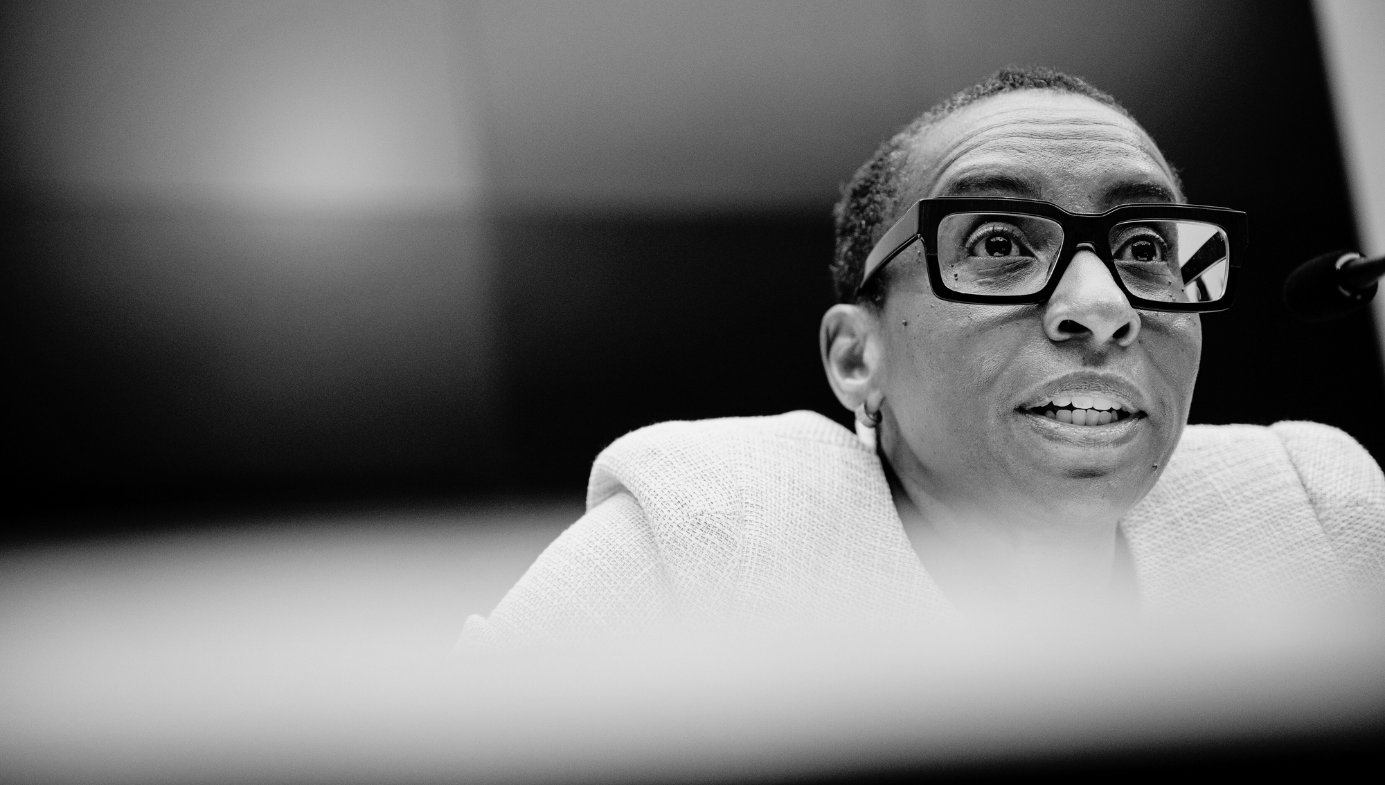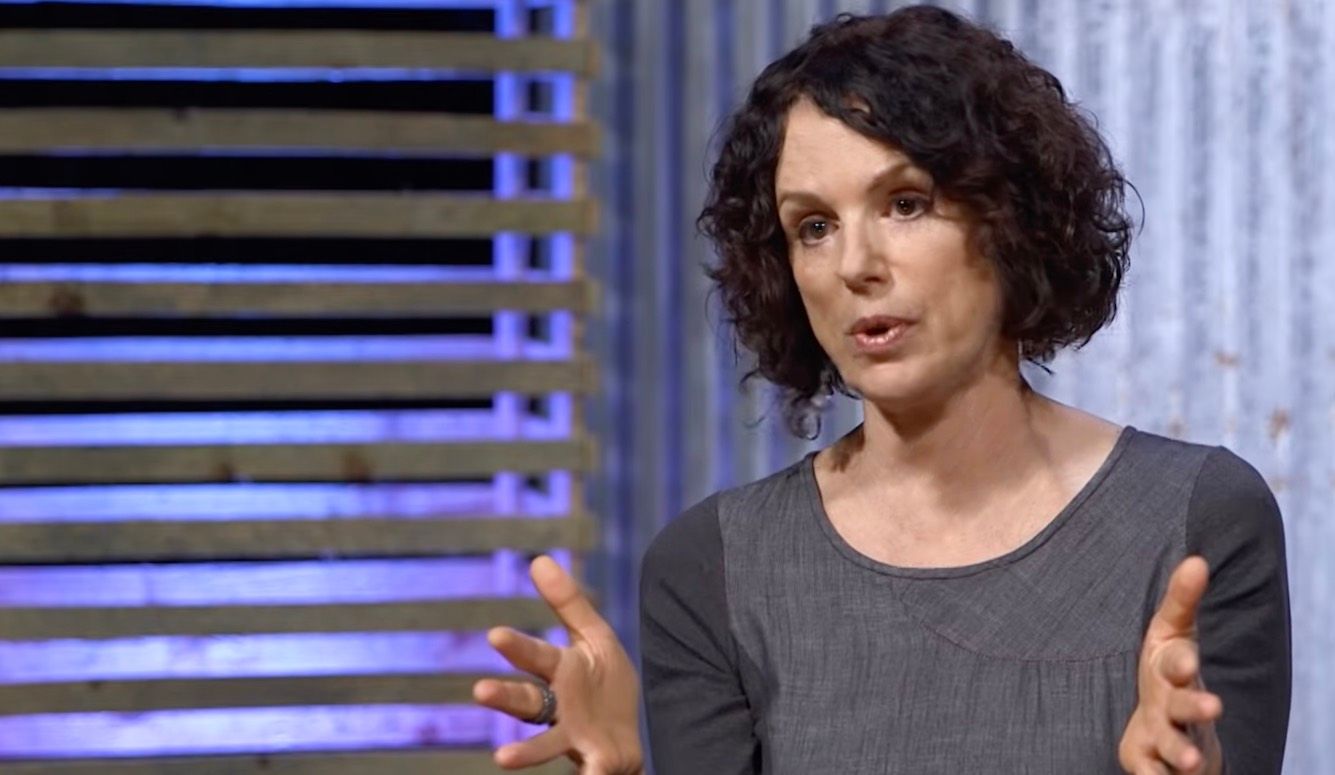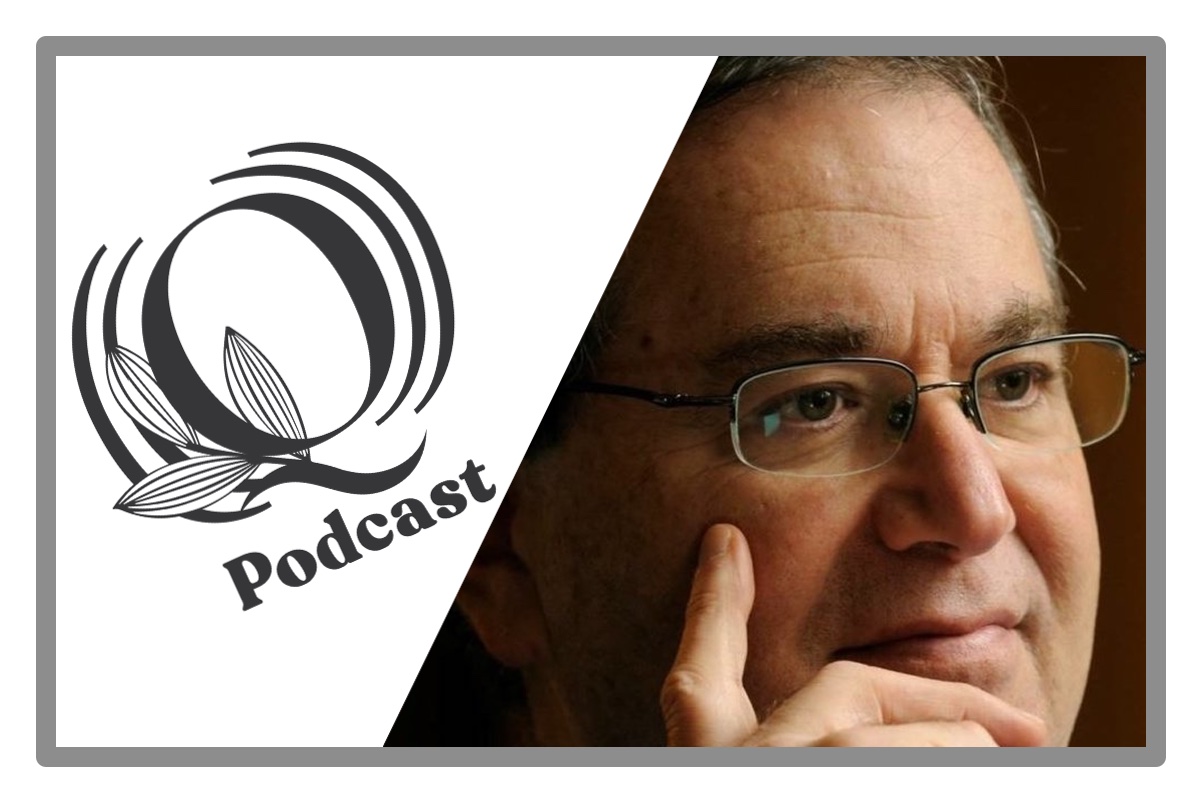
The Hamas terror attacks of October 7 and the ensuing war between Israel and Hamas in Gaza caused disruptions on many university campuses that moved concerns about campus speech from a limited constituency to front page news, exposing it to new audiences. The grilling of the presidents of Harvard, MIT, and Penn by a Congressional committee on the topic of campus antisemitism generated intense coverage, and a near unanimous conclusion—by actors across the political spectrum—that the presidents did a poor job of explaining campus turmoil, how antisemitic speech and conduct were handled under prevailing campus policies, and what they might have done differently to protect their students. Public uproar, the resignation of both the UPenn president and board chair and a narrow escape from that fate by the Harvard president ensure that campus speech won’t soon recede back into the shadows. But the ability to create a campus environment in which students can express their views free of harassment depends on understanding the role of free speech and academic freedom in higher education.
Lost in much of the discussion of how to balance our freedoms with ensuring protection from harm is an appreciation of why universities exist in the first place: what are they for? The core mission of universities is to discover, explore and transmit knowledge, and free speech and academic freedom are fundamental to those goals. Despite the centrality of these values to the mission of the university, they’ve been under assault in recent years from two distinct directions. From one pole, members of the campus community have attempted to suppress views and voices that they perceive as offensive or harmful to vulnerable groups of people. They’ve shouted down, disinvited, shamed, and punished faculty and invited speakers for expressing views they oppose—sometimes with university complicity—more often without administrative comment or intervention. Many view this “cancel culture” as a major problem, while others see its prevalence and impact as exaggerated for political reasons. Whatever its extent, cancel culture has been amplified by programs under the rubric of diversity, equity, and inclusion (DEI) established with noble intent—that have markedly expanded their scope and remit. Today, DEI programs promote speech codes inconsistent with free expression that lead many to self-censor, an outcome that encourages “cancel culture” by silencing its critics and emboldening its advocates. More limited in their goals at the outset, DEI programs and administrators now influence faculty recruitment and curricula, previously the sole dominion of the faculty.
In contrast to the two foregoing challenges of cancel culture and DEI, assaults on academic freedom have also arisen in public universities through government efforts to influence faculty hiring, curricula, and other faculty prerogatives. These actions are claimed to be justified by concerns that prevailing approaches produced politicized educational outcomes requiring state intervention. The first two challenges of cancel culture and DEI excesses generally arise within left-leaning campus cultures, and the third of government intrusion arises from right-leaning state governments. Holistic and productive discussion of these diverse threats to academic freedom has been limited by their links to progressive vs right wing political factions.
If we’re going to meet these challenges, we need to understand the legal underpinnings of free speech on campus. First Amendment speech protections directly apply to state university campuses, and though private universities have no such protections, most choose to respect similar rules. But even First Amendment protections have limits. Speech may—and should—be restricted when it directly targets specific individuals or groups and is threatening, harassing, or bullying. Even speech that doesn’t directly target specific individuals or groups may be restricted as contributing to “hostile environment harassment,” when it is “so severe, pervasive, and objectively offensive, that it effectively bars ... access to an educational opportunity or benefit.” In fact, under federal civil rights laws, any educational institution that receives federal funds has a legal obligation to redress any discriminatory harassment of students with particular identities.
As expressed in law and policy, the criteria for such distinctions are narrowly drawn to limit excessive suppression of speech. Of course, physical violence and interference that prevent others from carrying out their business are also out of bounds, even if motivated by strongly held ideas and related speech.
So, a key question is: how well have universities managed these complicated speech-related issues? I believe they have done so poorly, especially in recent years. And one major root of the recent problem is this: the institutional approach to identifying speech as acceptable—vs threatening, harassing, or bullying—has been influenced by ideology, rather than neutral principles independent of the content of speech, and these decisions have therefore been rife with double standards.
To understand this requires an examination of DEI programs over the past several decades. Their initial intent was generally seen as admirable: to achieve equal opportunity and an inclusive and welcoming environment for individuals of increasingly diverse backgrounds. In the process—and despite some successes—they have also created new and perhaps unexpected challenges to free expression. As a result, some view such aspects of these programs with alarm, while others, including most university leaders, explicitly support them as essential to institutional mission and values, stressing their initial goals. The initial intent—to promote diversity across many dimensions and establish an environment of “inclusive excellence”—is still widely supported, including by me.
But DEI soon evolved to focus predominantly or exclusively on specific “marginalized communities” defined by race, sex, gender and other attributes, promoting an “identitarian” approach, and in that context regulating speech to prevent harms to those seen as marginalized. Eminent Harvard professor Danielle Allen, a co-chair of Harvard’s 2018 presidential taskforce on Inclusion and Belonging, wrote a recent oped explaining how Harvard’s DEI program “stumbled badly” since then. She said, “three themes in our report went largely overlooked by university administrators as they began to pursue implementation—our focus on academic freedom, on the need to make space for religious identity and on the need for greater political diversity on our campus. Older paradigms that focused only on some groups as marginalized, as opposed to all groups as sources of potential and perspective, came back to the fore.” Indeed.
One way DEI efforts affect speech is by defining as microaggressions speech that many don’t view as problematic, such as statements like “I think the best person should get the job,” or “America is a melting pot,” and many others. Such speech is clearly protected under the First Amendment and cannot justify suppressive actions. Required “trainings” impart specific views on microaggressions and other topics, though their validity and efficacy have not been established; most evidence suggests no benefit or even harm. Skepticism about these approaches among many faculty is rarely publicly expressed, for fear of reputational and career damage catalyzed by activists on social media and through other means (“how can you be against diversity—you must be a racist”) and even formal discipline.

The ideologic underpinnings of most DEI programs are easily identified. They typically adopt an oppressor/oppressed dichotomy and decolonialization ideology as conceptual frameworks—though these concepts are imprecise and readily contestable. Some faculty, especially in the humanities and various “area studies,” are deeply engaged in this work and accept the frameworks as valid, employing them in their scholarship. But many others, especially in the sciences and engineering, ignore these ideas and programs or privately oppose them, and they have been largely invisible to the general public. This all changed after Oct 7, when the concerns of Jewish students about the antisemitism they faced on campus were either ignored by DEI functionaries, or worse, with some stating that Jews and Israelis were identified as among the “oppressor class” and therefore required no DEI attention.
Faced with this newly fraught campus free speech debate, two distinct directions might be followed. Some students, alumni, donors, and faculty, concerned that antisemitic speech and actions cause harms that must be addressed, demand restrictions to antisemitic speech to avoid such harms, adding Jews and antisemitism as protected classes within an expanded DEI framework. This addresses the prevailing double standard that limits DEI protections to select groups and identities while excluding others—including Jews and Israelis—and on those grounds the approach might appear defensible. But this approach concedes that DEI bureaucracies are equipped to accomplish content-neutral speech protection; given the current state of such programs and their leadership, that view should be rejected.
The approach we should follow would create an environment that facilitates— through cultural norms and policies—a free and respectful exchange of ideas across difference. This radically different approach would strengthen the commitment to free speech, but through a content-neutral approach to identifying any exceptions to it, fully independent of political and ideological influences that now characterize most DEI efforts. This would require substantial changes to the current DEI apparatus, for which double standards that privilege certain groups and categories of harm have been a central feature.
These two mutually exclusive paths—to extend speech limitations under a DEI framework vs protecting free speech by content-neutral applications of relevant law and practice—would produce profoundly different consequences for the future of higher education. To make the right choice, we must recognize the often-indistinct border between permissible and impermissible speech related to threats, harassment, and bullying; separate the goals of DEI broadly accepted and fully consistent with academic freedom from those that may not be; be prepared to engage with organized interests of administrators and a subset of faculty involved in and committed to the existing approach; and assess the likelihood that either approach could achieve its goals, given the current views of faculty and fiduciary boards.
While these free speech issues have been the focus of recent attention and contribute importantly to what ails universities today, the post Oct 7 free speech and antisemitism crises reflect a much deeper set of underlying issues. These issues have not been publicly acknowledged by most university leaders and faculty, and the current moment represents an unexpected opportunity for them to correct that. Success requires an accurate diagnosis of the problem and a coherent and actionable plan for remediation. My Harvard colleague Steven Pinker has recently done just that in his five-point plan for a solution. With modest differences in articulation and emphasis, I concur, as described below. I focus here on Harvard, whose faculty I’ve been on for 45 years; but the same issues (and solutions) apply to other universities.
- Harvard should develop and promote a new policy on academic freedom that applies to all Harvard schools—no such policy exists. This should acknowledge and address the complex distinctions between speech that is protected and not, while stressing the critical role of content neutrality in making such distinctions. Disinvitations that are motivated by disagreement with the views of external speakers, or harassment of faculty in response to their beliefs or stated opinions, would be identified as unacceptable. Confidence in a new policy would be enhanced if the university acknowledged some of its past failures in this domain, of which many have contributed to the sense that a new policy is needed. For example, one Harvard scholar, Carole Hooven, was subjected to public, personal attacks from people representing themselves as speaking on behalf of Harvard. This happened after she published an outstanding book on sex differences and gave an interview about it in which she talked about the binary nature of sex. The lack of public support from university administrators, who should have vigorously supported her right to express her views in an environment free of harassment, ended up driving her out of a long and successful teaching career. As the dean of her school at the time is the current university president, this might be a good place to start.
- Harvard should develop and promote a new policy making explicit the types of physical interference and overt violence that are unacceptable on campus, whatever the ideas or objections that may have motivated the actions. This should include occupations of spaces including classrooms and common areas, disruptions of the activities of students, faculty and staff, vandalism, and other behaviors that interfere with the legitimate activities of community members. Response to such violations must involve due process, be timely and appropriate to the threat that is created, and any consequences should be explicit and applied evenly, independent of the stated purpose of the action. Of course, protests that violate the law—such as civil rights protests in the 1960s—may be virtuous, but in these instances protestors knew they were breaking the law and were willing to suffer legal consequences as a statement of conscientious objection.
- Harvard should adopt a policy on institutional neutrality, along the lines of the Kalven principles adopted in 1967 by the University of Chicago. The policy would declare that University leaders—presidents, provosts, deans, department chairs and potentially others—should not offer official statements on social and political issues of the day (though, of course, we would understand that they hold these). Rather, the policy identifies that the core role of leadership is to enable these issues to be discussed, debated, and studied by faculty and students without interference or institutional favoritism. Among other things, this would spare them from rapidly crafting statements on complex and controversial issues on which they most often have no special expertise, and dealing with community members who take issue with elements of their statements. Exceptions to the rule would include issues directly involving the functioning of the institution, where leadership involvement and speech are not optional, but essential to fulfilling their roles. The existence of edge cases where application of the policy might be debated does not prevent such a policy from being established and successfully followed, as it has been at the University of Chicago.
- Harvard should conduct an objective, data-driven review of DEI policies and administration as they have existed and evolved over several decades. The goal of the review would include identifying those elements of DEI programs that remain faithful to the broadly accepted goals of both making Harvard diverse across many dimensions and a creating a welcoming community of “inclusive excellence,” an inspiring vision. The review should also identify whether some elements of existing DEI programs are ineffective or harmful to the goals of inclusive excellence and academic freedom. Elements to be examined should include whether there is an excessive focus on the roles of racial, sexual, and gender identities as opposed to emphasizing commonalities across difference that should promote inclusion and community; the role of DEI-related speech codes; the requirement for diversity statements in faculty hiring and advancement that can be seen as a form of compelled speech, including how they are used and their real-world consequences; and the status of DEI “trainings” whose benefits are difficult to identify and may even cause harm.
- Harvard should review the state of intellectual and viewpoint diversity within the university overall, and in specific domains where viewpoint diversity is especially limited (e.g., political viewpoints in elements of the social sciences, much of the humanities, “area studies”). It should examine potential adverse consequences of limited viewpoint diversity for scholarly advancement of the relevant fields. If viewpoint diversity is found to be deficient by objective review, suggest approaches to address this consistent with respect for academic freedom. Reviews of departments and schools are convened on a regular basis, and assessing viewpoint diversity should be expected to be one goal of such reviews. But examining viewpoint diversity appears not to have been high among concerns of such reviews in the past, perhaps because those chosen to conduct and assess them held the dominant views and were satisfied with existing viewpoint diversity of the relevant fields.
The state of higher education and the academic freedom that enables it have long been the subject of discussion and debate. That a brutal Hamas terrorist attack in Israel would reverberate on US university campuses and stimulate this debate coming into focus could never have been anticipated, and yet that is what has just transpired. Reaction to antisemitism on campus uncovered a double standard with regard to speech policies, and along with it, a broader web of inadequately interrogated campus policies and culture that are detrimental to the mission of universities to discover and disseminate truth. The profoundly important task we now face is to keep discussion of these issues alive, so that university leaders and their fiduciary boards will be able to show the insight, will, and courage to undertake reforms to advance these critical institutional missions for the benefit of society.

A 2020 conversation with the author.






